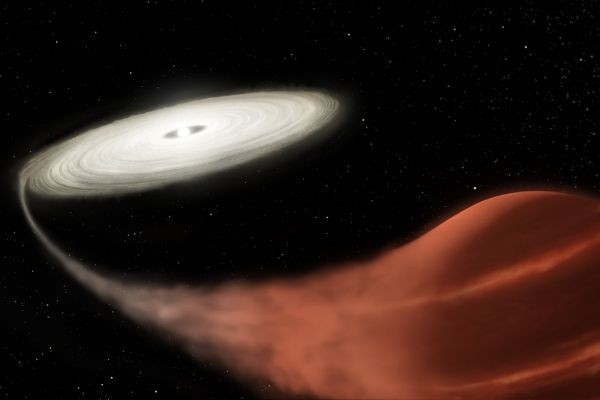
Kepler detected the dwarf nova system called KSN: BS-C11a, which is made up of a white dwarf and brown dwarf which is significantly smaller than the white dwarf.
The regular orbit of the brown dwarf around the larger white one is the distance from Earth to the Moon. A total of 83 minutes and a distance of 400,000 kilometers is how close they are.
Like a vampire, the large white dwarf is absorbing matter from the brown one. That will deplete its mass eventually and die.
Mass that surrounds any dwarf star will become an accretion disk, that will be an outburst in time. The mass around it will fuel the outburst.
Catching this astronomical event is rare and goes for long periods without an outburst. Catching on before or in progress is a rare event to witness.
When the outburst was captured by Kepler, it was pointed at the right time when KSN: BS-C11a had that outburst in progress. This is one of the rarest astronomical events to witness on earth.
With the help of Kepler, there was no way to capture the evidence or even see it. The sun obscured the view and earth's view as not so clear.
By accident, it was not found until it was seen by Ryan Ridden-Harper, an astronomer from the Space Telescope Science Institute. Finding the archive revealed information about the star systems.
This discovery was never intended and scientists were not looking for such a superoutburst in that direction. As noted by Ridden-Harper, they got this amazing even instead of a transient.
While the event was ongoing, Kepler kept pointing and recording the phenomena. The outbursts rose in brightness and intensified fast as till it stopped.
Most theories and models by scientists will account for the rapid amplification of light. How it began is another question answer.
One problem is how the accretion disks ignore the accepted theories and are unexplained. Happenings like these are now seen other dwarf supernova outbursts in the galaxies
Dwarf system binary nova systems are known to science for decades, but catching something new and seeing it is not so easy.
Formation of accretions disks is seen through galaxies, from new stars to supermassive black holes. To know them is to understand them, and add it to the pool of knowledge.
One possible outcome is a superoutburst when the matter in the accretion disk at its maximum. As it gets too massive and the gravity will vibrate at the same frequency as the brown dwarf orbiting the white dwarf. Thermal temperatures rise in the disk, and it triggers the super-outburst.
Upper limits the accretion disk temperature from 700-5,300 degrees Celsius and up to 9,700-11,700 degrees Celsius when the outburst erupts. Which is released as energy and to restore the mass to normal?
There might be more hidden in Kepler's data and more capture of unknown astrological phenomena. As the telescope acts as an observer, always on the lookout for more opportunities to further science. In deep space, mysteries lurk, and tools like Kepler be of great assist.










